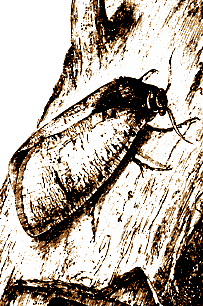
Cryptic coloration typical to moths lets them blend into their surroundings, lessening exposure to predators.
The insect order Lepidoptera consists of butterflies and moths. The name refers to the tiny scales covering the adult insect's wings. Their wings are used in flight and in various behaviors associated with their life history, such as searching for specific hosts for egg laying and searching for flowers with nectar for adult feeding.
 Cryptic coloration typical to moths lets them blend into their surroundings, lessening exposure to predators. |
Butterflies account for only eight percent of the lepidopteran insect species. Moths are far more common, accounting for ninety-two percent of lepidopteran species.
Butterflies visit plants for several reasons. First, butterflies need nectar to provide energy for flying and reproduction. It is in the process of drinking nectar that they pollinate plants. In fact, the evolution of flowers is considered to be a result of a mutualism between pollinators and plants. Plants provide nectar in flowers and butterflies transport pollen to ensure reproduction with unrelated individuals.
Insect feeding results in pollen transportation and is more reliable than the alternative form of pollen transport, wind. Look closely at a butterfly and you will notice large eyes for finding flowers and larval host plants and a coiled mouthpart called a proboscis used for probing and sucking nectar from flowers.
Butterflies are brightly colored as a way to advertise their distastefulness to predators. Throughout evolution, butterfly species evolved mechanisms to isolate and concentrate noxious host plant chemicals in their caterpillar bodies.
Female butterflies, searching for host plants upon which to lay their eggs, are attracted to plants which provide these specifically noxious chemicals to their caterpillars. This is why caterpillars of a butterfly species only feed on specific plants providing the correct chemical for storage or sequestration. During pupation, when caterpillars reorganize their bodies and metamorphose (change into adults), these chemicals are conserved and distributed into the body and wings of the butterflies. These chemicals then make the butterflies distasteful to birds.
Moths, by contrast, are often dully colored and lack functional mouthparts. Many moth species feed on a wide range of hosts since sequestration of chemicals is not usually done. Consequently, most moths are not distinctive. They tend to be cryptic, meaning they match and blend into the background colors of their native habitat.
 |
The long probosis of the Sphinx moth (Sphingidae) is used to reach nectar of deep-lobed flowers.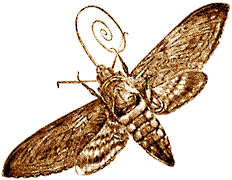 |
As a consequence of not having the plant chemical protection of butterflies, moths are highly palatable to birds. This is why they usually fly at night, to avoid bird predation. A few moth species are large and showy, but it is difficult to garden for their benefit. Most moth species lack mouthparts as adults, but the Tomato Hornworm (Sphingidae: Manduca sexta) is an example of the exceptions. The Tomato Hornworm is a species of Sphinx moth. Active at dusk, they are often mistaken for hummingbirds. Sphinx moths prefer to feed on deep-lobed flowers such as trumpetvine and nasturtium. Other large moths such as the Luna moth (Saturniidae: Actias luna), Cecropia moth (Hyalophora cecropia), and Promethea moth (Callosamia promethea) are very beautiful, but lack mouthparts as an adult. They cannot be lured to feed or reproduce in the garden as can butterflies. Saturniid moths also have specific host plants. |
| Antennae | ||
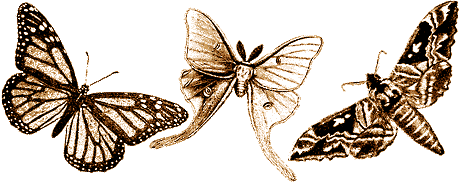 | ||
| clubbed (Nymphalidae: Monarch butterfly) |
plumose (Saturniidae: Luna moth) |
slender (Sphingidae: Sphinx moth) |
| Body | |
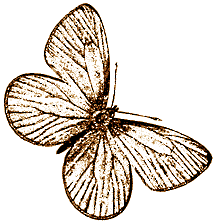 |
 |
| slender, smooth (Pieridae: Sulphur butterfly) |
thick, furry (Arctiidae: Tiger moth) |
| Wings at rest | ||
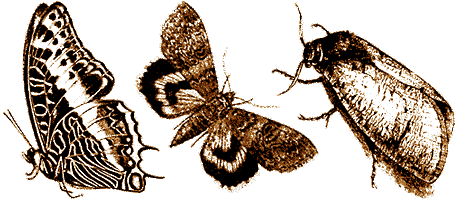 |
||
| usually held upright (Lycaenidae: Hairstreak butterfly) |
held flat (Noctuidae: Underwing moth) |
rooflike (Geometridae: Goat moth) |
| Transformational stage | |
 |
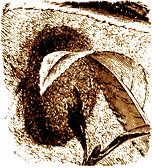 |
| butterfly: chrysalis | moth: pupa naked or cocoon |
Most butterfly species lay their eggs singly, one egg per leaf. Eggs hatch in a week or two. Newly hatched caterpillars are small and can grow for days unnoticed. Most caterpillars are selective about what they eat. They feed on only one or two host plant species. Throughout their development, almost all butterfly caterpillars remain on the plant where their eggs were laid, or move only short distances to feed on other suitable host plants.
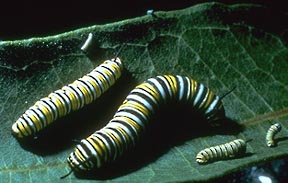 Butterfly caterpillars grow substantially in size as they mature, shedding their skin in a process called molting (Danaiidae: Monarch) |
Caterpillars increase in size as they develop. Larger, more visible caterpillars also may display characteristics designed to protect them from birds and other enemies. Monarch larvae feed heavily on milkweed and accumulate toxins called cardiac glycosides in their wings and bodies. The bright and distinctive markings of these colorful butterflies tell potential predators that their taste is bitter and the predator would be better off leaving them alone. Predators quickly learn this message.
Caterpillars shed their skins four or five times as they grow, in a process called molting. You may notice their shed skins on the host plant. After the caterpillar has molted a predetermined number of times, it wanders from the feeding site and searches for a place to dangle from and pupate. After attaching its posterior end to an object, the caterpillar molts again, revealing a different skin, which hardens into a pupa. It reorganizes its body plan inside the pupa, called a chrysalis, then emerges as a butterfly. Generally, butterflies that overwinter in Minnesota do so in the pupal stage and emerge in spring as adult butterflies.
|
|
Life History of a Few Butterflies |
|
|
Back to Table of Contents |